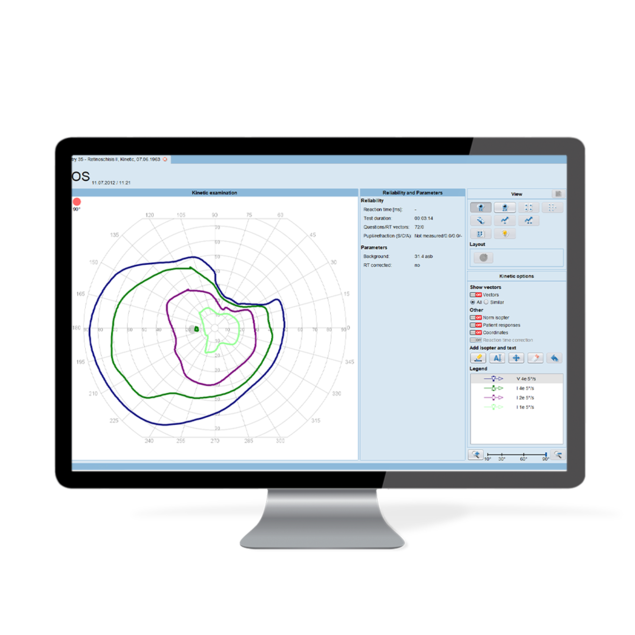Several clinical studies have compared the diagnostic accuracy between a manual Goldman perimeter and the Octopus 900 kinetic and found no difference. Thus, enjoy the diagnostic accuracy of the manual Goldman perimeter in a modern device.*
*PMID: 24587983, 15996734, 18344756, 2124337

